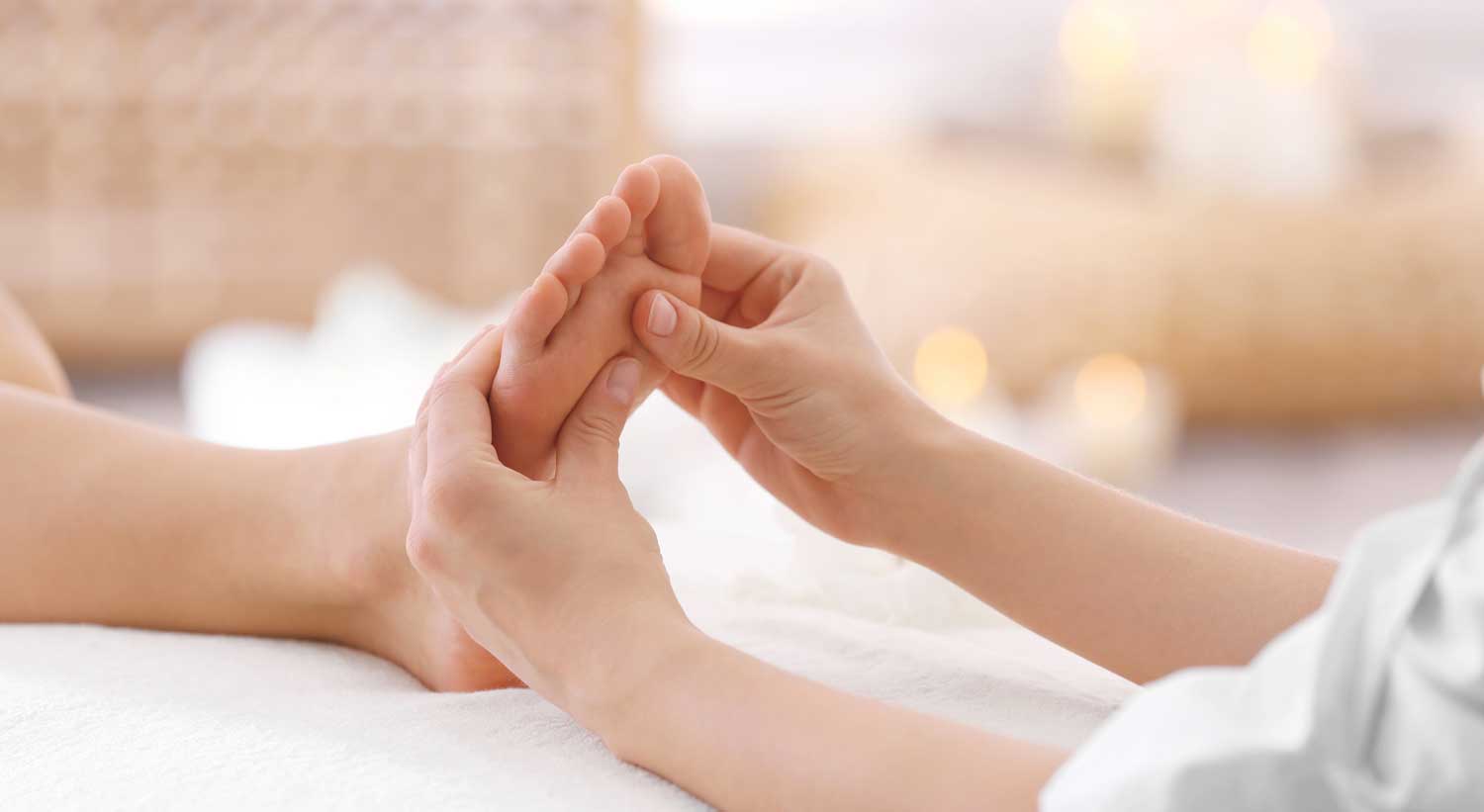
Reflexology
Reflexology is a well-established, non-intrusive complementary health therapy that aims to rebalance the body through the stimulation of specific points/reflexes on the feet and hands. Reflexologists believe the feet and hands act as a miniature map of the body and when these reflexes are stimulated, a response can take place in the corresponding body parts. This can then trigger the body’s own healing mechanisms.
Our feet work hard for us carrying the entire weight of our bodies. With approximately 7000 nerve endings in our feet, by providing a reflexology treatment, it can energise the entire body, relax us and make our feet feel brand new. (Reflexology is generally considered safe to be used in conjunction with conventional medicines and is suitable for all age groups).
Reflexology should not be used as an alternative to seeking medical advice.
What to expect
On the first visit a case history will be taken. Questions regarding medical background, current health and lifestyle will be asked. If appropriate, treatment will then be conducted.
The treatment itself is usually relaxing and consists of a variety of techniques applied by the practitioner’s thumbs and fingertips to the reflex points over the patients feet/ankles or hands. This is performed with the application of talcum powder, cream or oil.
Occasionally patients report some tender points however, nothing should be painful. Individual reactions to reflexology vary greatly, to gain the most from your treatment it is advisable to relax after the treatment and drink plenty of water.
Will Reflexology help me?
Reflexology is a holistic treatment that works differently on each individual, so it is not possible to predict individual reactions to treatments. The theory of reflexology is to help restore the body’s natural balance. Reflexologists do not claim to cure, diagnose or prescribe.
Benefits
- Reducing stress and anxiety
- Promoting relaxation
- Improving breathing disorders
- Promoting restful sleep
- Improving skin, ear and digestive conditions
- Strengthening the immune system
History of Reflexology
The art of reflexology dates back to ancient Egypt. There is documented evidence showing hand and foot work, without tools. Further evidence of the practice of foot and hand work has been found in ancient India and China. In 1913 Dr William Fitzgerald introduced ‘zone therapy’, believing that different zones on the feet and hands were linked to areas of the body and organs. In 1930 Eunice Ingham and her nephew, Dwight Byers, further developed zone therapy into what has later became known as reflexology.
Using both the osteopaths and the sports massage has sorted me right out
I have been treated at East Sussex Osteopaths over the past year and can easily say I highly recommend anyone to go to them for treatment. Using both the osteopaths and the sports massage has sorted me right out.
Tom
